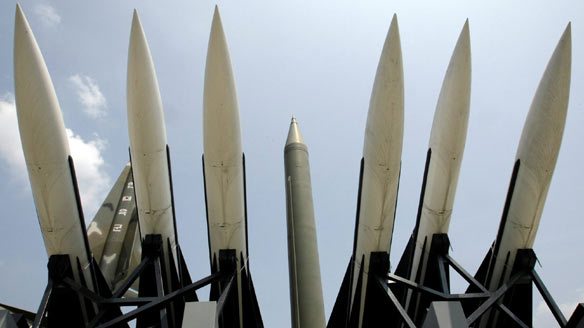North Korea has built a test facility that may be intended to develop a marine-based ballistic missile launch capability, using submarines or surface vessels, a US think-tank said Tuesday.
While submarines carrying ballistic missiles could provide the North Korea with a survivable second-strike nuclear capability, the US-Korea Institute at Johns Hopkins University stressed that Pyongyang was likely “years” from achieving the required technology.
Reviewing recent commercial satellite imagery, the institute said a new test stand had been identified at the Sinpo South Shipyard in northeastern North Korea.
The size and design of the stand suggested it was intended “to explore the possibility of launching ballistic missiles from submarines or of a shipboard vertical launch ballistic missile capability,” it said in an analysis on the closely followed 38 North website.
The analysis said it was difficult to speculate what kind of missile system the North might use on a submarine-based system, noting that existing large, liquid-fueled missiles like the medium-range Musudan and Nodong would be difficult to adapt.
A naval version of existing short-range Scud missiles or an entirely new system might present less of an engineering challenge, but whatever system is chosen, “it is likely to take years to design, develop, manufacture, and deploy”, it added.
Despite those caveats, the prospect of a second-strike capability — the ability to survive an initial nuclear attack and hit back — will only fuel concerns about the pace of North Korea’s nuclear weapons development.
Last week, the commander of US forces in South Korea, General Curtis Scaparrotti, said the North had progressed to the point where it could probably miniaturize a nuclear device to be fitted on the tip of a missile.
“We have not seen it tested … (but) I don’t think as a commander we can afford the luxury of believing perhaps they haven’t gotten there,” Scaparrotti told a news conference in Washington.
A Defense Intelligence Agency report leaked last year had also concluded the North had mastered the necessary miniaturization technology, although US officials at the time said it did not represent a consensus view of all the country’s spy agencies.
The ability to fit a nuclear warhead device on a credible delivery system would be a major breakthrough for the North, which is also seen as pushing the development of an inter-continental ballistic missile (ICBM) capable of reaching the mainland United States.










